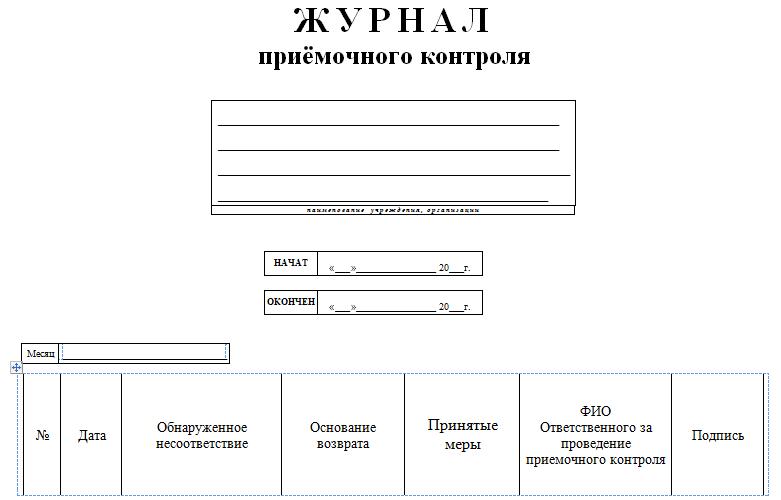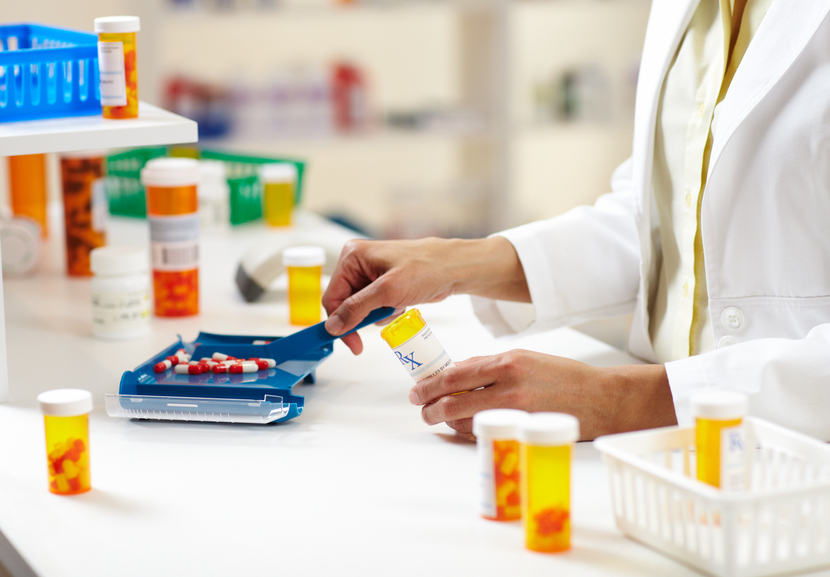The pharmacy is represented by a specialized trading institution selling medicines and equipment for the treatment and prevention of various diseases. Only companies with a license to sell specialized medicines can engage in this activity. Upon receipt of batches of medicines, acceptance control is necessarily carried out at the pharmacy. The procedure is carried out by a special commission, and is also accompanied by the entry of the identified information into a special accounting journal.
Organization of control
Acceptance control in a pharmacy should be competently organized by the owner of this trade organization. The verification procedure is performed for different parameters:
- assortment of drugs and specialized equipment;
- the number of units accepted;
- quality of tablets and syrups;
- the conditions under which the storage of goods received is carried out;
- the safety of containers in which the transport of drugs was carried out.
Control has significant differences from the direct acceptance of goods.

Purpose of
The main purpose of the use of acceptance control in a pharmacy is the detection of various counterfeit or inferior drugs. Using this procedure, counterfeit is detected.
The process is implemented by a special acceptance committee, which is formed on the basis of the order of the head of the pharmacy. Its structure usually includes employees of this institution, but you can also attract third-party specialists for this.
What is being evaluated?
Information on all studied drugs and equipment is entered into the acceptance control register in the pharmacy. In addition, it is taken into account by what parameters these or those means were evaluated. For this, the following characteristics of the goods are taken into account:
- the appearance of the medicine;
- color that should be uniform and consistent;
- the smell corresponding to the composition of a particular drug;
- compliance of the medicine with the information available in the instructions;
- the presence of various supporting documents;
- the correctness of filling and the accuracy of the documentation that is transmitted to the pharmacy along with the delivered goods.
If any medicine does not meet the requirements even by one criterion, then a special report is drawn up by the commission on the basis of which claims are made to the supplier. This document provides all the shortcomings and problems found during the control process.

When is it held?
Acceptance control is required for all goods that go to the pharmacy. If various biological additives or baby food, as well as food products for medicinal purposes, are sold in the organization, the process is performed during the acceptance of these goods. This is due to the fact that the goods are considered to be food products, therefore, they are evaluated solely by external parameters and packaging, and the contents of the accompanying documentation are also taken into account.
For direct drugs, periodic monitoring of this control by the appointed commission is required. Through this process, counterfeit or falsified drugs are often detected. All such drugs are removed from the assortment, after which the process of resolving disagreements with the supplier begins.
What are the conditions?
To conduct acceptance control, certain conditions must be met:
- medicines must be supplied by an official supplier with whom an agreement has been drawn up for the supply of goods;
- the head of the pharmacy will certainly issue an order, on the basis of which the inspection commission is convened, and the person responsible for the control is also appointed;
- before delivery, the supplier must comply with certain conditions during storage and transportation of goods, and this applies especially to thermolabile drugs;
- It is important to ensure that there is no damage to the packaging;
- the pharmacy should have documents that contain data on the date of shipment of the goods, the name of the drug, its series and lot, quantity and other parameters;
- employees of the organization must have supporting documents and certificates of compliance.
The supplier must attach a copy of the license to the contract, which allows him to engage in the production and sale of various drugs. This permission must be valid throughout the entire period of cooperation. At the end of the process, the journal of acceptance control in the pharmacy will certainly be correctly filled out.

Rules for appointing a commission
A special commission must be formed to conduct acceptance control at the pharmacy. The order, on the basis of which the employees of the institution are appointed as members of the commission, is issued by the direct director of this organization. This document indicates who is included in the commission, what rights and obligations appear in the new body, and also for what purposes it is created.
Members of the commission should carry out control only with the full membership. This leads to the fact that some employees of the organization are forced to go to work on their work day, receiving an additional fee. Often, the head of the pharmacy acts as a responsible person.

Goods Acceptance Procedure
Before the acceptance control is carried out by employees, the goods are accepted from the supplier. The process is implemented in the following sequence of actions:
- the goods are initially accepted from the supplier based on the information contained in the invoices;
- the medicines received are checked against the number of items available on the invoice, for which a forwarding driver engaged in the delivery of goods is involved in the process;
- the seller of the pharmacy must make sure that all the necessary supporting documents are submitted to him, presented by invoice, waybill, supplier’s license, certificate of conformity and other papers that confirm the quality of the delivered drugs;
- all documents received from the supplier must be certified by the signature of the person in charge and the manufacturer’s seal, which must be verified by the pharmacy worker;
- the packaging is opened by a specialist, which must not be damaged;
- goods are laid out on the basis of their name;
- the number of medicines is checked with the information that is available on the invoice;
- the seller must ensure the optimal dosage, series and packaging of the drug;
- if any discrepancies are detected, then such drugs are separated from the rest of the goods;
- Shelf life and product labeling are checked.
Acceptance must be properly executed, for which a special act is drawn up containing information on the date of acceptance of the goods, as well as on the number of medications received. At the end, the signature of the person in charge and the seal of the organization are put. If there are any discrepancies or shortcomings, then they are certainly indicated in the act.
If the pharmacy workers for various reasons violate the rules and terms for the acceptance of goods, then the organization may lose the license for its activities.

Acceptance inspection
It is carried out after the medicine arrives at the pharmacy.The procedure ends with the entry of information into the register of acceptance control in the pharmacy. Therefore, this document must be available at each institution without fail. The acceptance control process is divided into the following stages:
- potent drugs and toxic substances are immediately placed in special storage places, protected from access by unauthorized persons;
- checked the presence of thermal containers for thermolabile preparations;
- medicines with an expiration date are not taken;
- goods that do not meet the requirements for the number of supporting documents and quality are returned to the supplier;
- checked the appearance and other parameters of the goods;
- accompanying documentation is being studied;
- information from documents is compared with actual data;
- the supplier’s license is being studied;
- each medicine is checked for presence in the Register of medicines;
- if there are doubts about the authenticity of the drug, for example, it has a different coating color or heterogeneous coloring, then an examination is carried out in a specialized laboratory;
- if the medicine does not meet any requirements, then it is not accepted for sale, therefore it is put aside in a separate box;
- It is important to make sure that the container in which the product was delivered is not broken, and there is also an instruction in Russian.
Be sure to have a pharmacy registration journal of the results of acceptance control. It indicates the date of the procedure, as well as the results obtained.

Rules for filling out a document
The form of the register of acceptance control in a pharmacy may vary slightly from organization to organization. But the following information must be included in this document:
- date of acceptance control;
- detected inconsistencies and problems;
- the main factors for which drugs do not meet the numerous requirements of the law;
- the rules by which drugs are sold;
- measures taken by pharmacy management.
The journal of acceptance control in a pharmacy is issued in a free form. It must highlight a separate line for goods of dubious quality. They draw up a special act, which lists all the identified discrepancies.
A sample pharmacy acceptance register can be found below.

What to do next?
As soon as control is carried out, members of the commission send all identified substandard and dubious goods to quarantine. Their implementation or arrangement on the shelves of the institution is not allowed. The following factors are taken into account:
- if there is no important documentation for the drugs, then after receiving the necessary papers from the supplier, drugs are allowed before the sale;
- if low-quality goods are discovered, then their sale is suspended, after which the relevant information is transmitted to the department of Roszdravnadzor;
- employees of this government agency periodically check the journal to make sure that the pharmacy’s management follows the requirements of the law.
Although there is no approved journal form, it is recommended that you use the sample inspection journal in the pharmacy so that all necessary lines are in this document.

Conclusion
Acceptance control at the pharmacy must be carried out after acceptance of the goods. The process is implemented by a special commission appointed for these purposes. The control consists in a thorough study of direct medications and accompanying documentation.
If any discrepancies or problems are identified, then they are certainly recorded in a special journal, which is kept in free form.
